Find the potential difference (inV) between points A and B shown in the circuit.
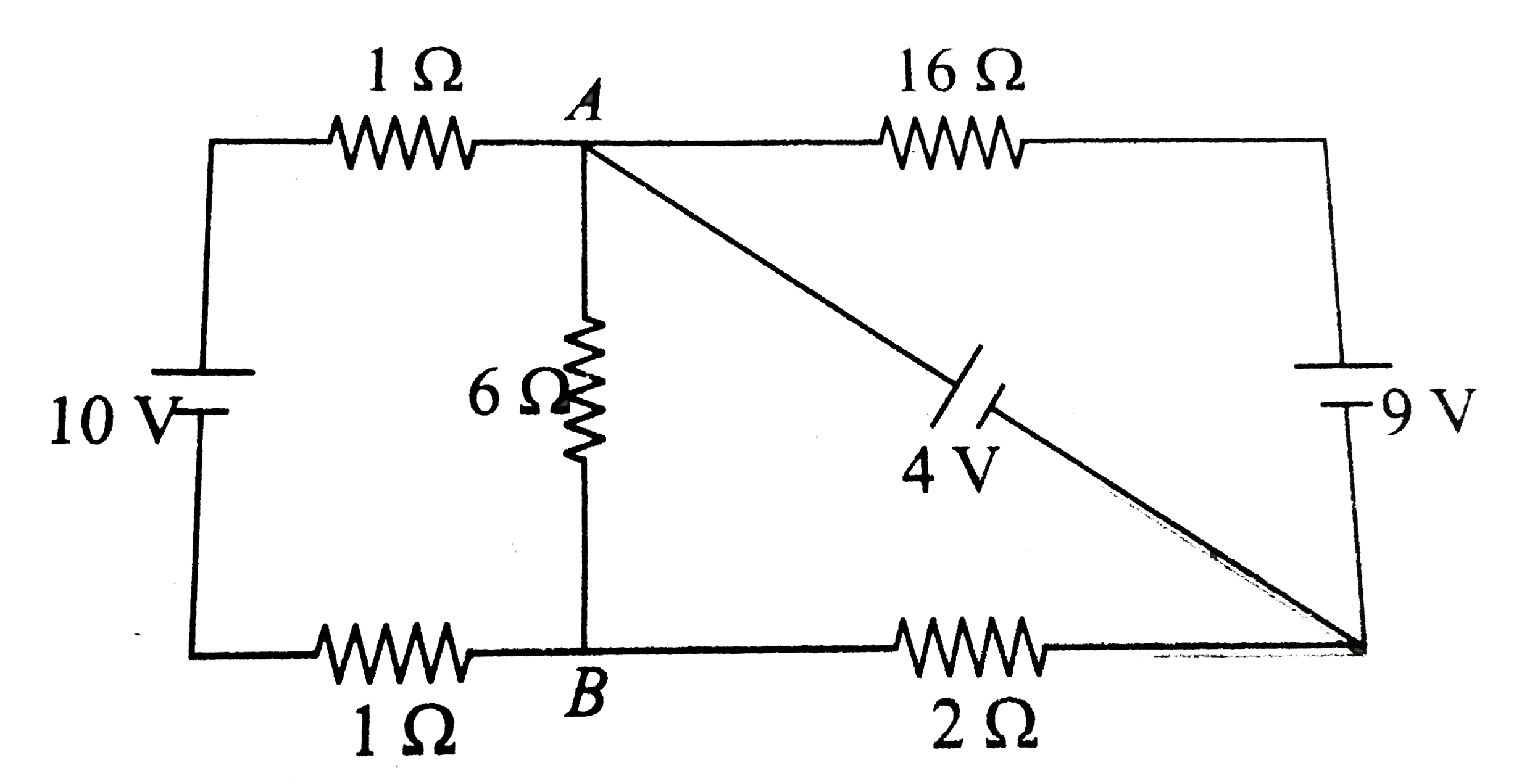
Video Solution
Text Solution
The correct Answer is:6
9V and 16Ω can be ignored because potential difference between A and c is fixed, which is 4V. The circuit can be drawn as follows :  ,
, 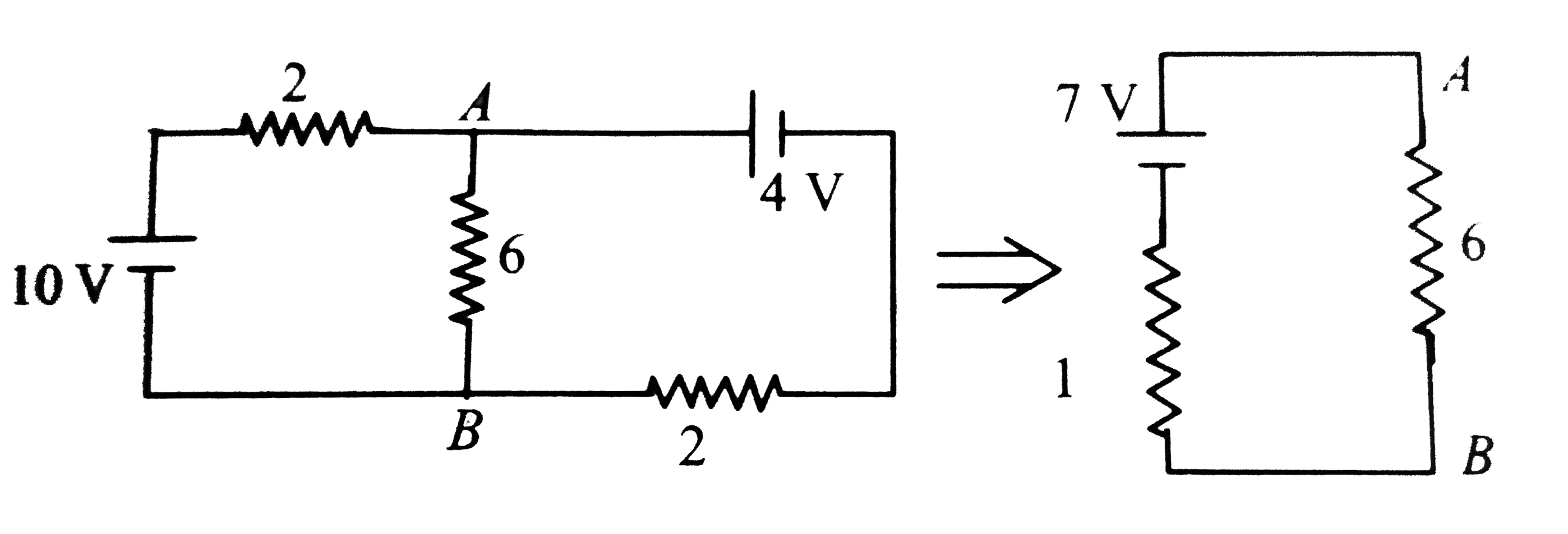
Equivalent emf is e=Σ(E/r)Σ(1/r)=10/2+4/21/2+1/2=7V
Equivalent internal resistance is r0=1Simga(1/r)=11/2+1/2=1Ω
Now VAB=7(6+1)×6=6V
|
Updated on:21/07/2023
Topper's Solved these Questions
- BOOK - CENGAGE PHYSICSCHAPTER - ELECTRIC CURRENT AND CIRCUITEXERCISE - Comprehension35videos
ELECTRIC CURRENT AND CIRCUIT
- BOOK - CENGAGE PHYSICSCHAPTER - ELECTRIC CURRENT & CIRCUITSEXERCISE - Kirchhoff s law and simple circuits15videos
ELECTRIC CURRENT & CIRCUITS
- BOOK - CENGAGE PHYSICSCHAPTER - ELECTRIC FLUX AND GAUSS LAWEXERCISE - MCQ s38videos
ELECTRIC FLUX AND GAUSS LAW
Similar Questions
Knowledge Check
- Question 1 - Select One
What is the potential difference between the points A and B in the circuit diagram shown in figure ?
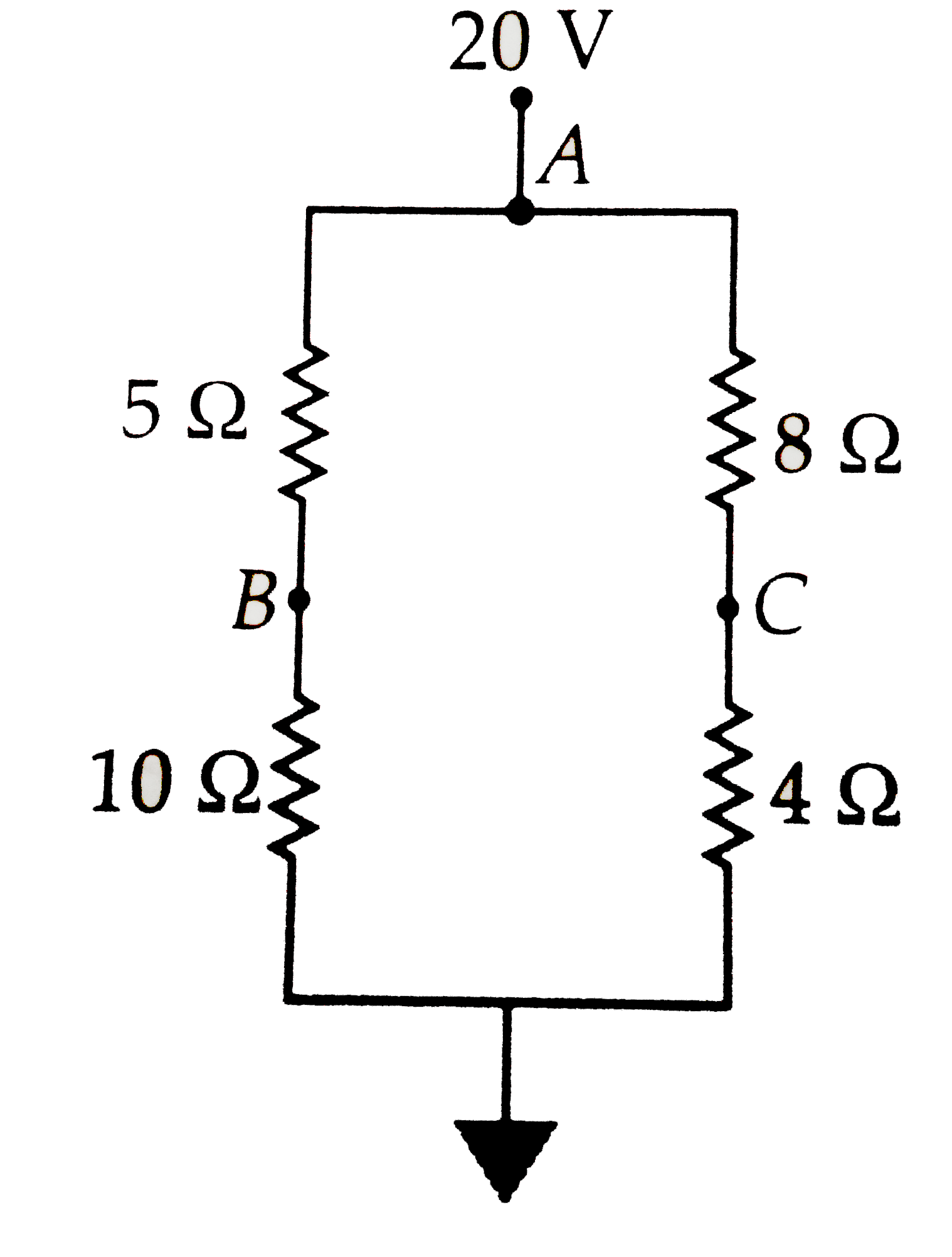 A203VB103VC20√3VD10√3V
A203VB103VC20√3VD10√3V
Find the potential difference between the points A and B in the circuit shown in Fig. 4.66. Internal resistances of the cells are negligible.
View SolutionFind the potential difference between the points A and B in the circuit shoun in.
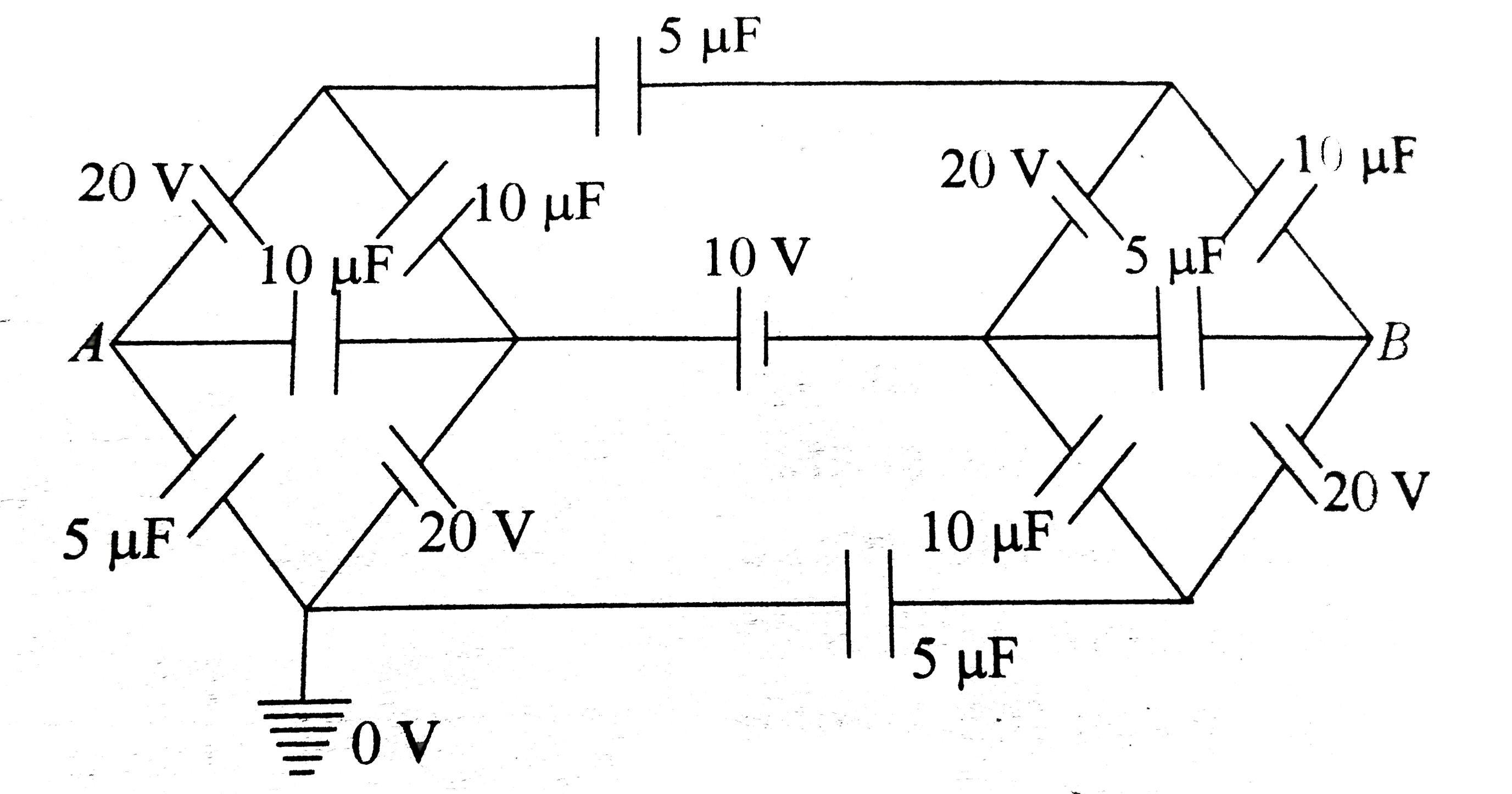 .View Solution
.View SolutionDetermine the potential difference ϕA−ϕB between points A and B of the circuit
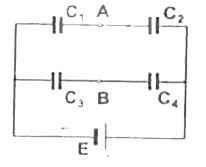 View Solution
View SolutionWhat is the potential difference between points A and B in the circuit shown?
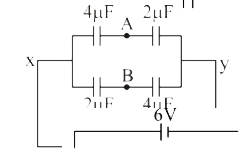 View Solution
View SolutionThe potential difference between the points A and B in the given circuit is
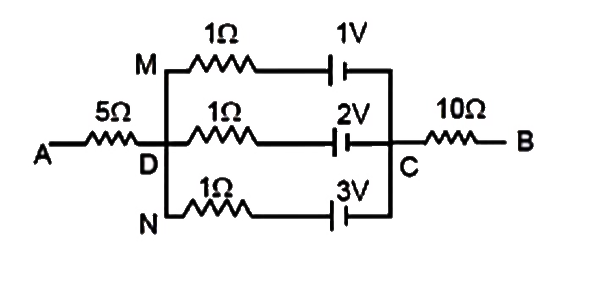 View Solution
View SolutionFind the potential difference between A and B as shown in the figure
 View Solution
View SolutionFind the potential difference between the points a and b of the circuit in figure 6.25 when the battery has an emf of 110 V.
 View Solution
View Solution



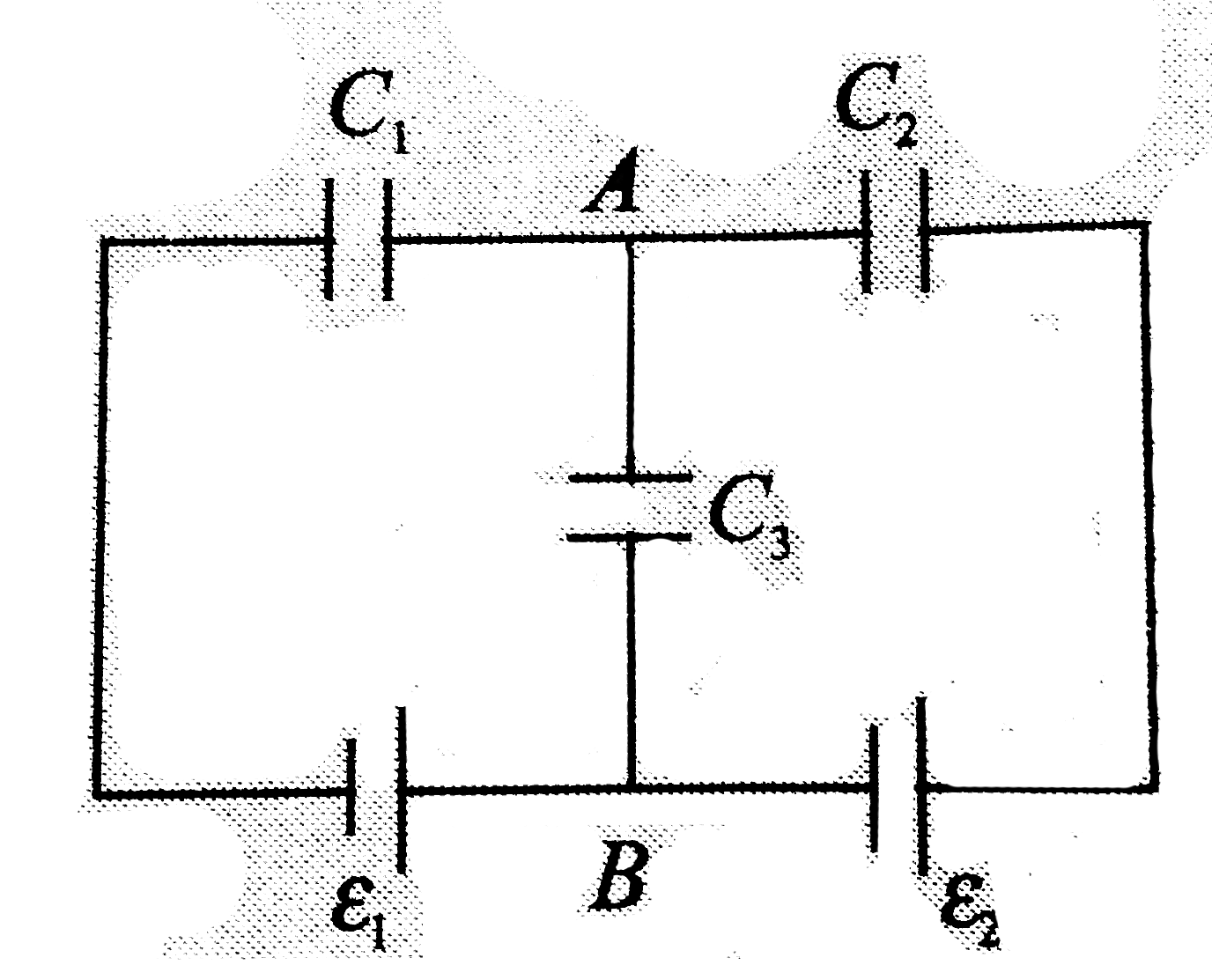 .
.